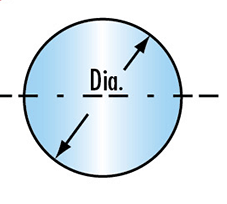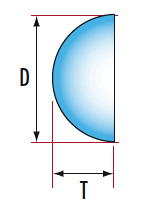Preparation of Nitrogen-doped Graphene Quantum Dots and Its Fe-ion Fluorescence Sensing in Xinjiang Institute of Physics and Chemistry
 |
Nitrogen-doped graphene quantum dots (QDs) have low toxicity, good water solubility, and high photostability, making them more and more widely used in optoelectronic devices, photocatalysis, sensing, and bioimaging. The rapid preparation of nitrogen-doped graphene quantum dots and simple separation are of great significance to the above research fields.
Institute of Environmental Science and Technology, Xinjiang Institute of Physics and Chemistry, Chinese Academy of Sciences Researchers use high-nitrogen-content, surface-specific metal-organic framework compounds (MOFs) to guide porous carbon materials as starting materials, using a unique nitric acid vapor strategy, quickly and easily. Nitrogen-doped graphene quantum dots with uniform particle size and abundant surface functional groups were obtained. The fluorescence sensor was constructed using the quantum dot as a fluorescent probe, and a sensitive, rapid, and specific detection of iron ions was realized. The detection limit was as low as 80 nM. This study also shows that by selecting appropriate metal-organic framework compound-oriented carbon materials, it is expected that other heteroatom-doped graphene quantum dots can be quickly and easily prepared, which greatly broadens the application range of MOFs-based materials.
The research results have been published in the Journal of Materials Chemistry C. The related research work has obtained the "Hundred Talents Program" of the Chinese Academy of Sciences, the "Light of the West" of the Chinese Academy of Sciences, the National Natural Science Foundation, the Xinjiang Youth Uyghur Autonomous Region Youth Science and Technology Innovation Talent Training Project, and international cooperation projects. Funding.
Ball lenses Spherical ball lenses are commonly used for laser collimating and focusing, laser-to-fiber coupling, fiber-to-fiber coupling, and fiber-to-detector coupling. Larger spheres are easier to handle and ease the sensitivity of translational alignment. However, smaller spheres fit into smaller packages.
Sapphire and Ruby ball lenses are both made from Al203. Ruby or Ruby-Doped sapphire owes its red color to traces of chromium oxide (chromium content for ruby balls is typically >0.5%). While their physical and chemical properties are basically the same, their optical properties are somewhat different. Sapphire has superior optical transmission qualities. Ruby Balls are easier to see and therefore easier to handle for physical applications.


Ball Lens Half-Ball Lens
Specification of our ball lens:
*Material:BK7 or other optical glasses,optical crystal materials
*Diameter:1mm - 40mm
*Dimension Tolerance:+/-0.005mm
*Surface Quality:40-20
*Sphericity:0.005mm
*Coating:optional
Sapphire Ball Lens,2 Mm Sapphire Ball Lens,Sapphire Half-Ball Lens,Sapphire Glass Ball Lens
China Star Optics Technology Co.,Ltd. , https://www.opticsrealpoo.com